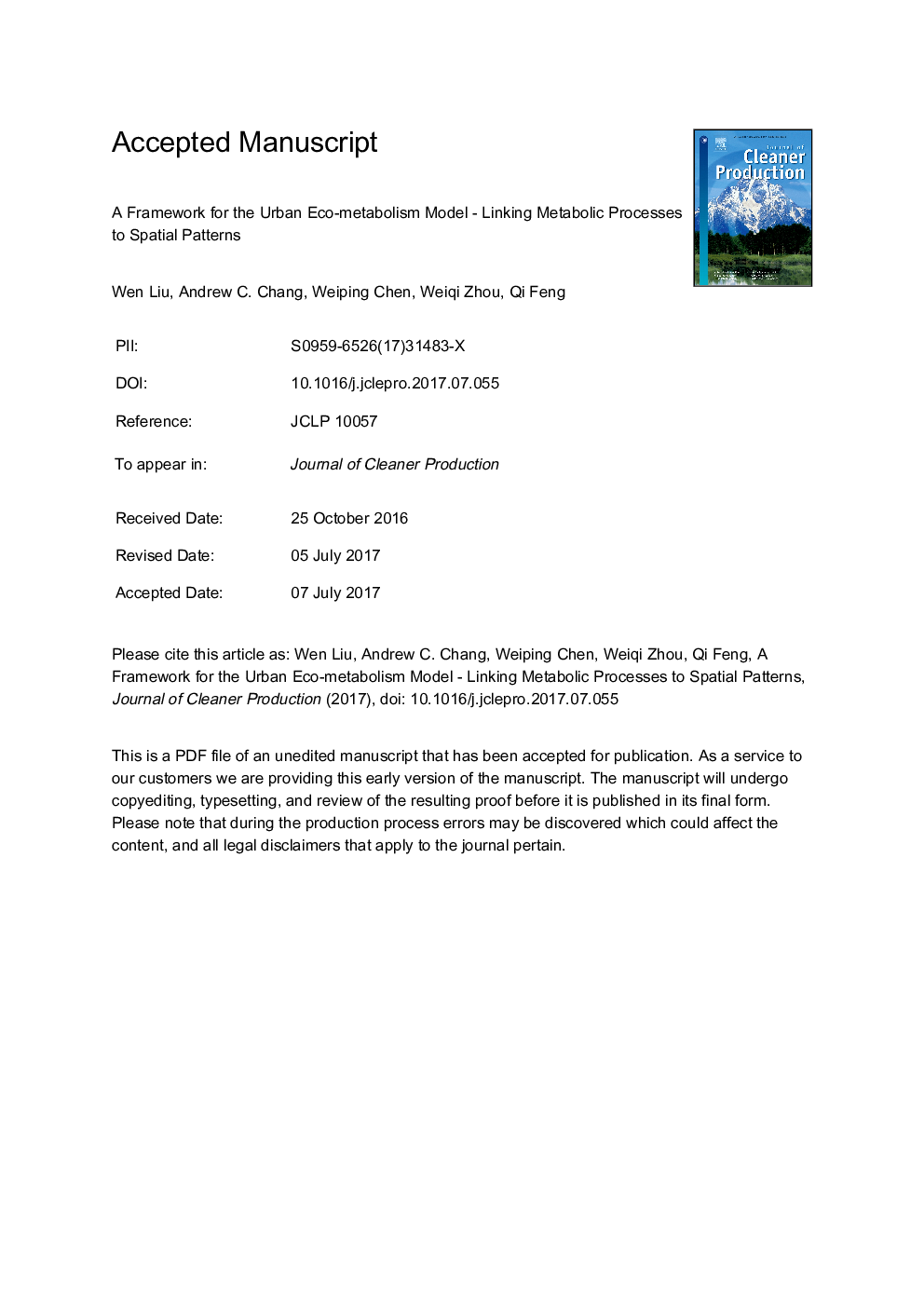| Article ID | Journal | Published Year | Pages | File Type |
|---|---|---|---|---|
| 5479992 | Journal of Cleaner Production | 2017 | 32 Pages |
Abstract
Rapid urbanization disordered the urban metabolism, pressed the contradiction between resources supply and demand, and caused urban environment deterioration. Urban metabolism provides important insights into the characterization of material and energy flows and the relationships between anthropogenic urban activities and natural processes. However, linking socio-economic and ecologic models, and tracking the time-dependent distribution and configuration of material and energy flows across the entire city are imperatively needed in urban metabolism model development. In this study, the points, lines and areas concepts were introduced to connect the urban landscape patterns and eco-metabolic processes. A framework developed to simplify the urban landscape as areas, and use points and lines to depict the eco-metabolic processes in space. In application, a model framework of urban water metabolism was used as an example to analyze the natural hydrological processes and social water metabolism in an urban ecosystem. Water balance of a community was calculated by the model. The total input and output of the community's water metabolism was 50189.6Â m3 and 47343.5Â m3 respectively. The community needed 1331.4Â m3/d water input and discharge 1198.26Â m3/d wastewater out. The runoff coefficient of the impervious area, pervious area and the community was 0.87, 0.30 and 0.55, respectively. The model has provided a tool for urban planners to improve landscape patterns and infrastructure layouts within urban ecosystem to build sustainable cities.
Related Topics
Physical Sciences and Engineering
Energy
Renewable Energy, Sustainability and the Environment
Authors
Wen Liu, Andrew C. Chang, Weiping Chen, Weiqi Zhou, Qi Feng,
